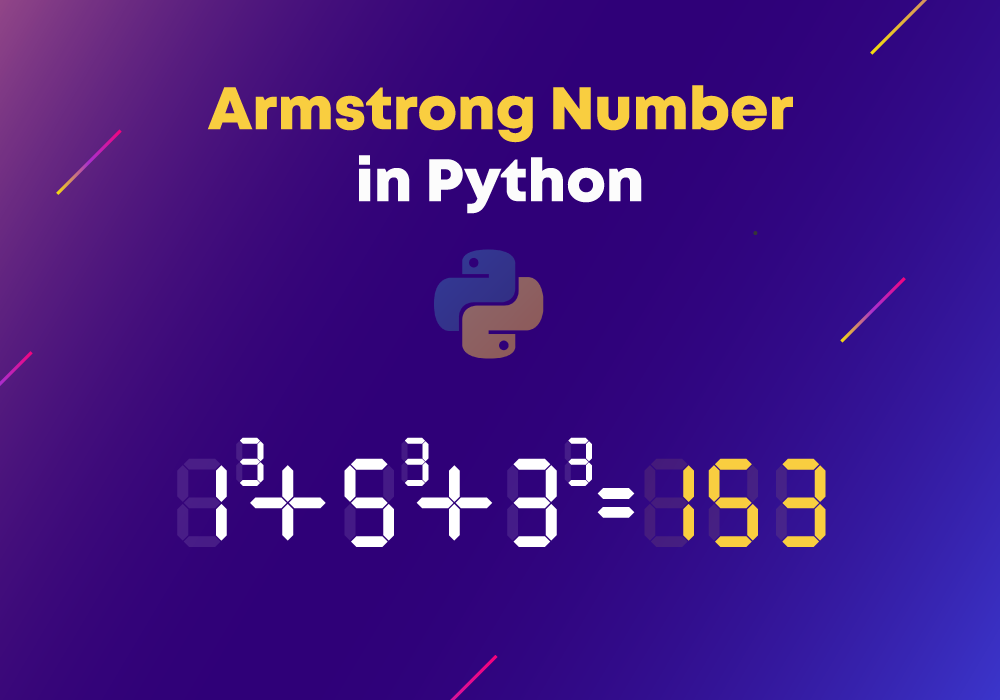What is an Armstrong Number?
An Armstrong number (or narcissistic number) in a given number base is a number that equals the sum of its own digits, each raised to the power of the number of digits. These numbers are a fascinating concept in number theory and a common starting point for beginners in programming. For example, in base 10:
Example:
153 = 1³ + 5³ + 3³ = 153
Key Properties:
- An Armstrong number can exist in any number base.
- In base 10, single-digit numbers (0 and 1) are considered Armstrong numbers.
Armstrong Number Examples
Here are some examples of Armstrong numbers in the decimal system:
- 3-Digit Numbers:
- 153: 1³ + 5³ + 3³ = 153
- 370: 3³ + 7³ + 0³ = 370
- 371: 3³ + 7³ + 1³ = 371
- 407: 4³ + 0³ + 7³ = 407
- 4-Digit Numbers:
- 1634: 1⁴ + 6⁴ + 3⁴ + 4⁴ = 1634
- 8208: 8⁴ + 2⁴ + 0⁴ + 8⁴ = 8208
- 9474: 9⁴ + 4⁴ + 7⁴ + 4⁴ = 9474
Armstrong Numbers in Base 3
Even in other bases, Armstrong numbers exist. For example: 122 (base 3) = 1³ + 2³ + 2³ = 17 (decimal).
How to Check for Armstrong Numbers?
To determine whether a number is an Armstrong number, follow this algorithm:
Algorithm:
- Input: Take the number to be checked.
- Find Digits: Determine the number of digits (“n”).
- Process Each Digit:
- Extract each digit using modulus (num % 10).
- Raise the digit to the power of “n”.
- Add the result to a running total.
- Divide the number by 10 to move to the next digit.
- Compare: If the total equals the original number, it’s an Armstrong number.
Example Algorithm in Python:
num = int(input("Enter a number: "))
original = num
sum = 0
n = len(str(num))
while num > 0:
digit = num % 10
sum += digit ** n
num //= 10
if sum == original:
print(f"{original} is an Armstrong Number!")
else:
print(f"{original} is not an Armstrong Number.")
Output Example:
Enter a number: 153
153 is an Armstrong Number!
Python Programs for Armstrong Numbers
Check a Specific Number:
num = int(input("Enter a number: "))
original = num
sum = 0
n = len(str(num))
while num > 0:
digit = num % 10
sum += digit ** n
num //= 10
if sum == original:
print(f"{original} is an Armstrong Number.")
else:
print(f"{original} is not an Armstrong Number.")
Output Example:
Enter a number: 123
123 is not an Armstrong Number.
Find Armstrong Numbers in a Range:
t1 = int(input("Enter the minimum value: "))
t2 = int(input("Enter the maximum value: "))
print("Armstrong numbers in the range:")
for num in range(t1, t2 + 1):
original = num
sum = 0
n = len(str(num))
while num > 0:
digit = num % 10
sum += digit ** n
num //= 10
if sum == original:
print(original)
Output Example:
Enter the minimum value: 100
Enter the maximum value: 500
Armstrong numbers in the range: 153, 370, 371, 407
Print the First “N” Armstrong Numbers:
N = int(input("Enter the number of Armstrong numbers to find: "))
count = 0
num = 1
print("The first", N, "Armstrong numbers are:")
while count < N:
original = num
sum = 0
n = len(str(num))
while num > 0:
digit = num % 10
sum += digit ** n
num //= 10
if sum == original:
print(original)
count += 1
num += 1
Output Example:
Enter the number of Armstrong numbers to find: 5
The first 5 Armstrong numbers are: 1, 153, 370, 371, 407
Conclusion
In this blog, we explored the concept of Armstrong numbers, their properties, examples, and Python implementations. Armstrong numbers may not have real-world applications but are a fun and educational topic for programming practice. For more tutorials on Python and machine learning, stay tuned!
Also Read:









